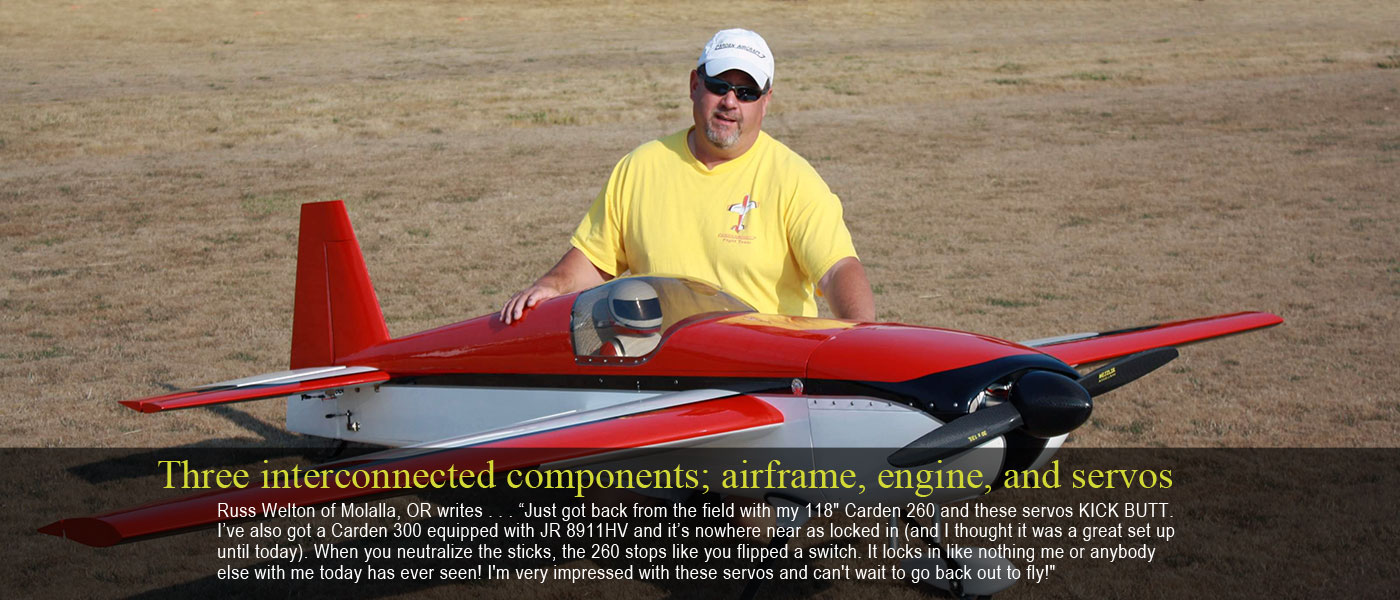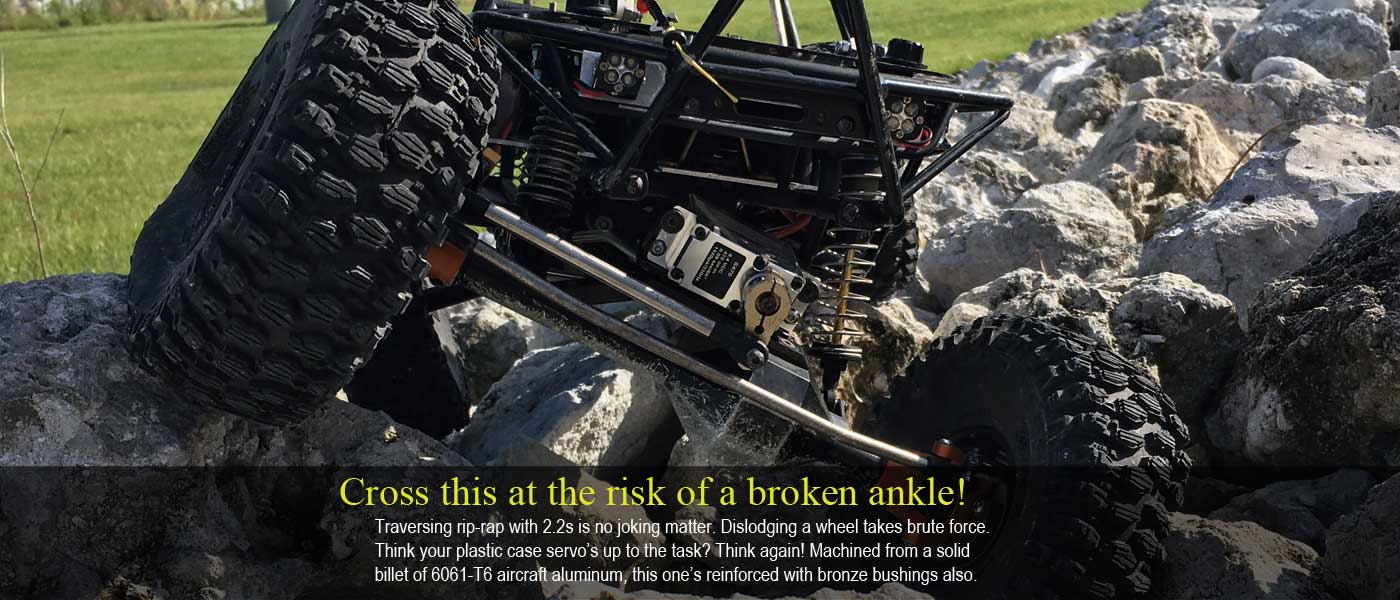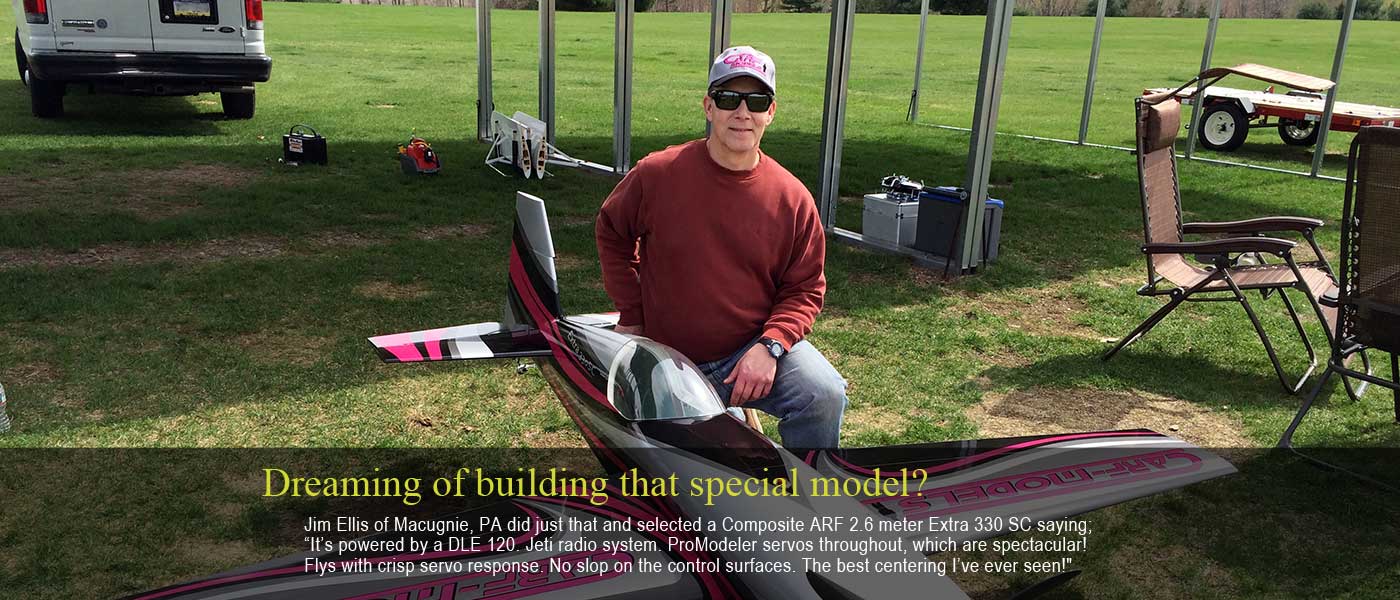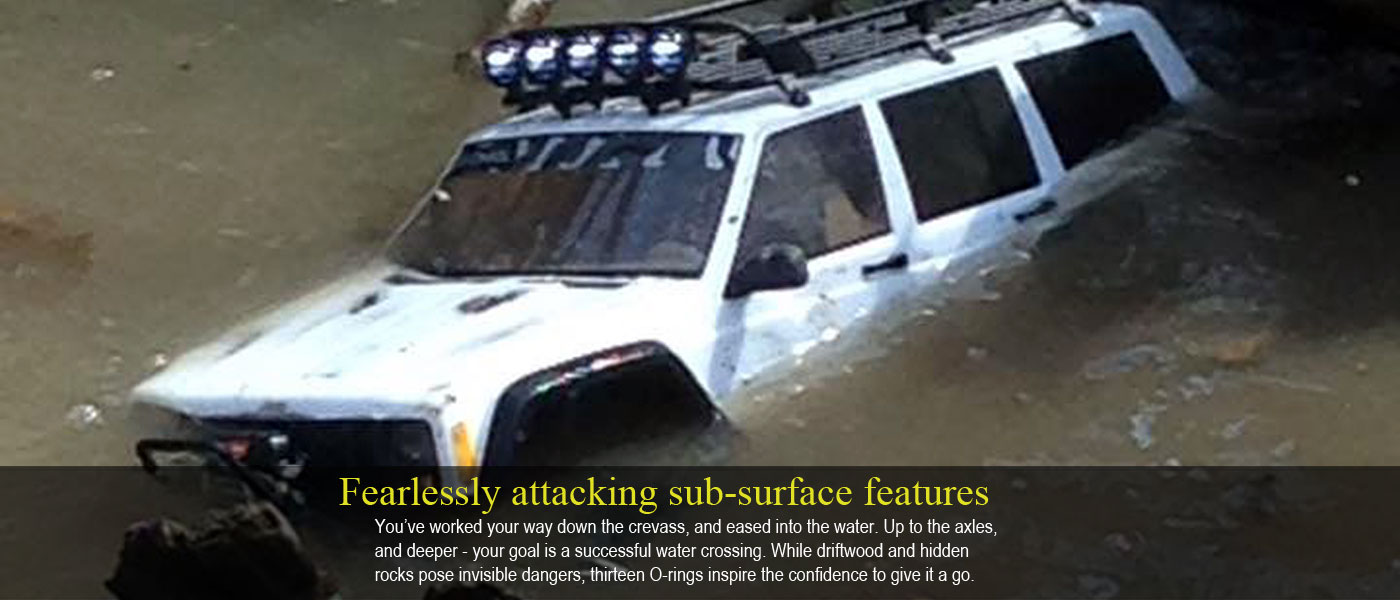RECAP:
Developed initially as a 420oz-in brushless servo for our lead non-civilian client nearly a decade ago, ongoing iterative improvements saw it achieve many firsts on its way to becoming the popular DS470BLHV. Things like steel gears, bronze hard points in the aluminum, and conformal coating on the PCB (permitting it to handle more torque and live longer in high vibration environments) were first introduced in this, our top of the range unit. And it led to gaining converts from other brands.
Meanwhile, it's been basically unchanged for the last three years, because our competition never sleeps, then staying a step ahead of them means our research never stops, either. While this led us to introduced the DS630BLHV DS930BLHV, and DS1155BLHV (at necessarily higher price points), now we've circled back around to the DS470 and have improved it yet again, resulting in the DS555BLHV. The best part is, this time along with a bit more torque you also get more speed. Significantly more speed. Enough to outclass the DS345BLHV (a great choice of helicopters, mid-size 3DXA models, and 1/8th scale racing) meaning we've deprecated it also (yes, the DS555BLHV replaces DS345BLHV because its just as fast and 75% more powerful and DS470BLHV because it's 50% faster and 25% more powerful). We call it a twofer because we eliminate a SKU (stock keeping unit) whilst we're at it. Win-win!
Bottom line? The king is dead, long live the king . . . the DS55BLHV. So while the DS470 is gone, please don't mourn it because this one's better! And by the way, the fact it's stronger and faster means you can install it on a 2-servo wing panel (one a DS470 and the other a DS55) and never notice a difference because it'll be a transparent match since a) being faster means it can keep up with the older unit, and b) being more powerful means it's 'always' got torque reserves compared to the one it's replacing - sweet!
Moreover, you'll find the DS555BLHV is a worthy successor because we've retained all the good points that made the DS470 such a winner - like bronze hard points for the steel gear shafts, 13 o-rings for sealing, conformal coating of the PCB . . . and all whilst keeping costs in check!
DISCONTINUED: DS470BLHV - leaving this information here for now.
Outputting 470 oz-in and transiting in 0.091 sec/60° the DS470BLHV standard-size
digital servo is well suited for 150-200cc powered IMAC aircraft from
the likes of Carden, AJ Aircraft, and Extreme Flight as well as rock crawlers like TRX4 and Wraith II.
Initially created
for our military and industrial UAS customers (primarily drones with
infrared sensors for pipeline inspection as well as LIDAR equipped
sensors for ag work), civilian users include professional builders and
competitors on the lookout for an edge. Offered for your consideration, this brushless digital servo will deliver roughly 30 pounds of force, and do so very, very precisely.



This is a hotly contested class with competitors offering servos with similar output. Examples can be found made by the big 3 (Futaba, JR, and Hitec) plus a host of newer players, like MKS, BK, and ProModeler.
Once you get into the target range of 500oz-in (about 32Kg-cm) we all fine tune things with gearing. Obviously there's a direct trade-off between torque and speed. For example, you can either opt for a bit more torque at the expense of speed, and the corollary, more speed in exchange for some torque.
You want this servo because it's better. For example, unlike hobby-grade competitors,
these are hand-crafted to meet
MIL-STD-810G-Part 16 (Vibration) Test Method 514.6 as well as Test Method 516.6
(shock). While it's unlikely the frame of your model will ever
transmit jolts to your servos like those imparted by impacting 20mm rounds, modelers
know all about crashes and
engines vibrations. This alone is reason enough to want this servo.
Of course, delivering munitions on target isn't of keen interest to
professional
drivers, either but the durability of this servo is a big deal.
What makes it ideal for the
torturous duty cycle involved in crawling a 15lb
rig over rip-rap an agile man could only traverse with difficulty - and
at the risk of breaking an ankle - is a case CNC-machined from a solid
billet of 6061-T6 aircraft aluminum. But there's more because the
pockets where the steel gear shafts fit have been bushed with bronze to
enhance durability!


If you fly IMAC maneuvers, then centering is your single-most important consideration. After all, you can't possibly fly
precise
maneuvers otherwise. For you, one of the principal reasons for wanting this servo are the MIL-SPEC components and genuine Nobel
potentiometer. These are game changers for the sport and while we pioneered their application expressly to suit our largest customer (the one delivering ordnance on a target 8000 miles away via GPS-steering), the intense R&D required just happens to suit your needs as well. Think of it as a little lagniappe derived from your tax dollars at work!


Once
professional builders began using these servos for their discerning customers, and as competitive pilots attending IMAC events used them,
then because these guys practice at club fields across the country, interest surged because sportsmen discovered them also. And amongst the especially attentive ones - for whom thoughtful touches like Allen head bolts instead of Phillips screws - was important, our reputation grew. If you have an eye for
detail, little things like these are signature characteristics that differentiate ProModeler servos from the rest of the pack!
Incidentally, this is the 5th iteration of this popular servo. We now
consider it a fully mature product. Meanwhile, yet another
example of how a ProModeler servo is the one you want is found in how it's protected from vibration. Competing servos
depend on a little square of foam rubber
sandwiched between the PCB and the bottom cover (to isolate the guts from vibration). We use an aerospace conformal
coating instead (we call it monkey-snot because it's such a sticky mess to deal
with and apply).
We also pay close attention to things like dust,
water, and exhaust-oil resistance. How? Through the use of 13 O-rings for sealing.
Why so many? It's
because truly protecting the insides from the environment means using there must be an O-ring everywhere, at the splined output shaft where it exits the case, where the three case components come together to become one, and even beneath the 10 individual screw heads!
For example, what if
while you're flying a pop-up rain shower develops before you can land?
Or maybe you love to fly off water! This means protecting the servo's guts from the
environment is important, right? After all, we know how pernicious water can be with
respect to
getting inside the servo. And this is important for all users . . .even if you never intend to take your servo underwater!
But if you do plan to play submarine, then read the askJohn article regarding how to make them more water-resistant with a couple easy steps.


Better
components. Better servos. The formula is simple. Decisions regarding
what go into ProModeler servos aren't made in accounting to optimize
price and profit, but in engineering. This servo doesn't cost less to
make than our competitors, it costs more. The reasonable price is due entirely to
a better business model. One that eschews the old way of doing
things (importer + distributor + hobby dealers) because they all get a
cut (at your expense). With us, you're the one doing the cutting . . . because you cut these middlemen out of the deal in buying direct!
Bottom line? These servo make good sense even if you 'are' made of money. But
if you're on a budget, then many modelers consider them a godsend!

Note: operating voltage is
4.8-8.4V, but optimal performance is obtained with a 2S LiPo instead of a
BEC. This is because LiPos deliver the required current without
voltage spikes, noise, or otherwise adversely affecting the delicate
avionics (25C or better is recommended). After all, synthetic orange
colored Tang may have gone to the moon, but it doesn't compare to
freshly squeezed orange juice. Same thing when it comes to feeding your
avionics!
Other Resources
For detailed specifications and dimension drawings, select the Specs tab above. Also, there's an even-handed look at the competition in the Comparison tab. Meanwhile, TL;DR
is chock full of nitty-gritty details so if you love delving deeply
into stuff some find too tedious to read, don't overlook this tab. Anyway, eyeball the Specs TAB above and see how well they match up with your requirements, then pull the trigger and add a set to your cart. You're going to love them!
FAQ
Q. Is it normal for the ProModeler DS470 to get fairly warm, almost hot to the touch, after 25-30 min of crawling? I set my endpoints after I first installed making sure no binding was occurring.
A. If there is no binding, no problem . . . and yes, it's going to get hot - of course! For example, depending on how hard it's working you may be dissipating 35W, maybe more. Ever touched a 35W light bulb? Burned your finger, right? The formula for power is W=V*A so plug in for Voltage, make an educated guess on Amperage (if you don't have an inline meter), then solve for Watts. Presto, you get a lot of heat! The point is, you can't get 470oz-in of force without a lot of power. Power means heat. Always has, always will.
Q. Sometimes when I rotate my DS470 back and forth by hand (with the power off)it reaches the stop and then gets stuck and won't move. I've never had a servo do this before, do I need to return it for service?
A. This is not unusual with the DS470 and doesn't indicate any fault. It's a trick of the gear ratio and the servo motor. If you've ever spun a brushless motor by hand you'll recall the feel of 'cogging' as it hits the poles of the magnets. What's happening is the stop for the servo works because of a pin in the output gear (we bore the gear and press a pin into place designed to hit a mechanical stop. However, what may happen as you turn it by hand (which is a bad idea anyway because you're forcing it backwards through 402:1 gear ratio using gears with tiny teeth), anyway, what happens is you hit the stop and this happens at about zero velocity. So what with four gears in the gear train (consisting of meshes between 8 working surfaces), is it may occur between teeth, or really close, and what with the backlash (for gear sets to work, even if they're the transmission of a million dollar Formula 1 car, there is a certain amount of backlash because it's the nature of how gears mate) plus the need to overcome the cogging in the motor itself is it gets stuck. The solution is to apply power and let it center itself - and stop forcing the gears back and forth manually! You don't want to get in the habit of doing this because it's not how servo gear trains are designed to work. Anyway, this won't ever happen under power, and during use . . . so there's no problem!